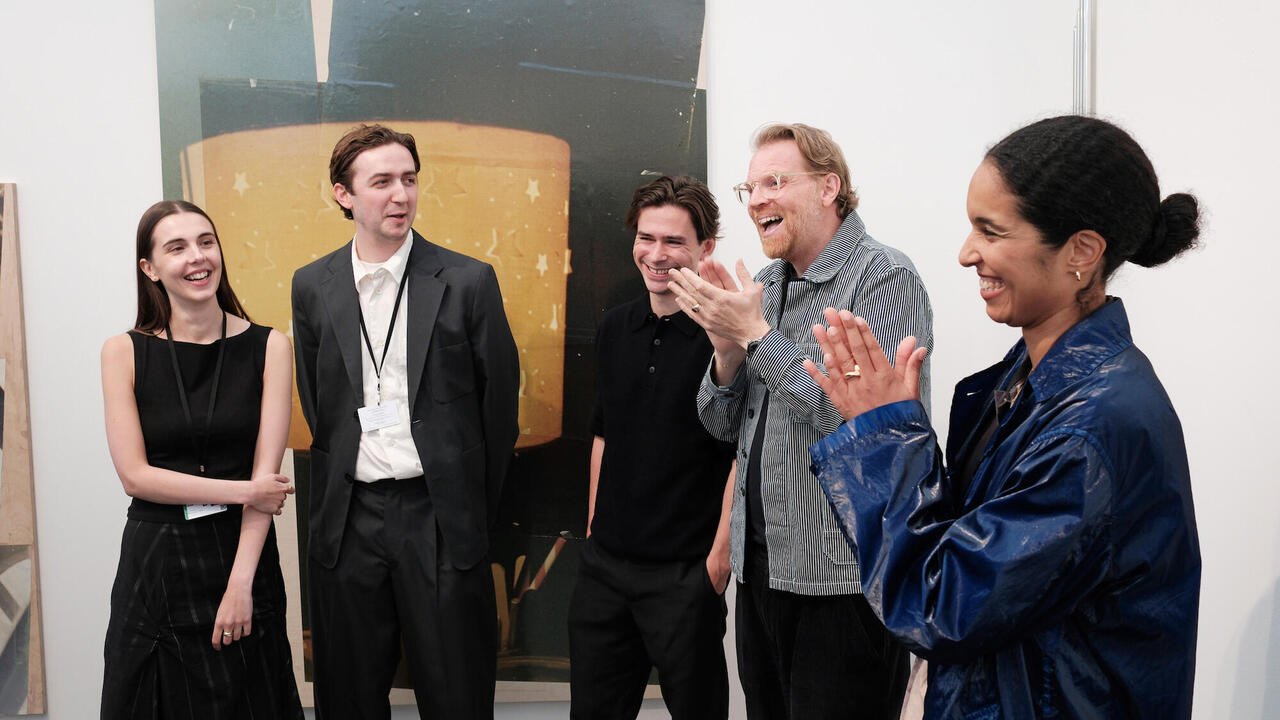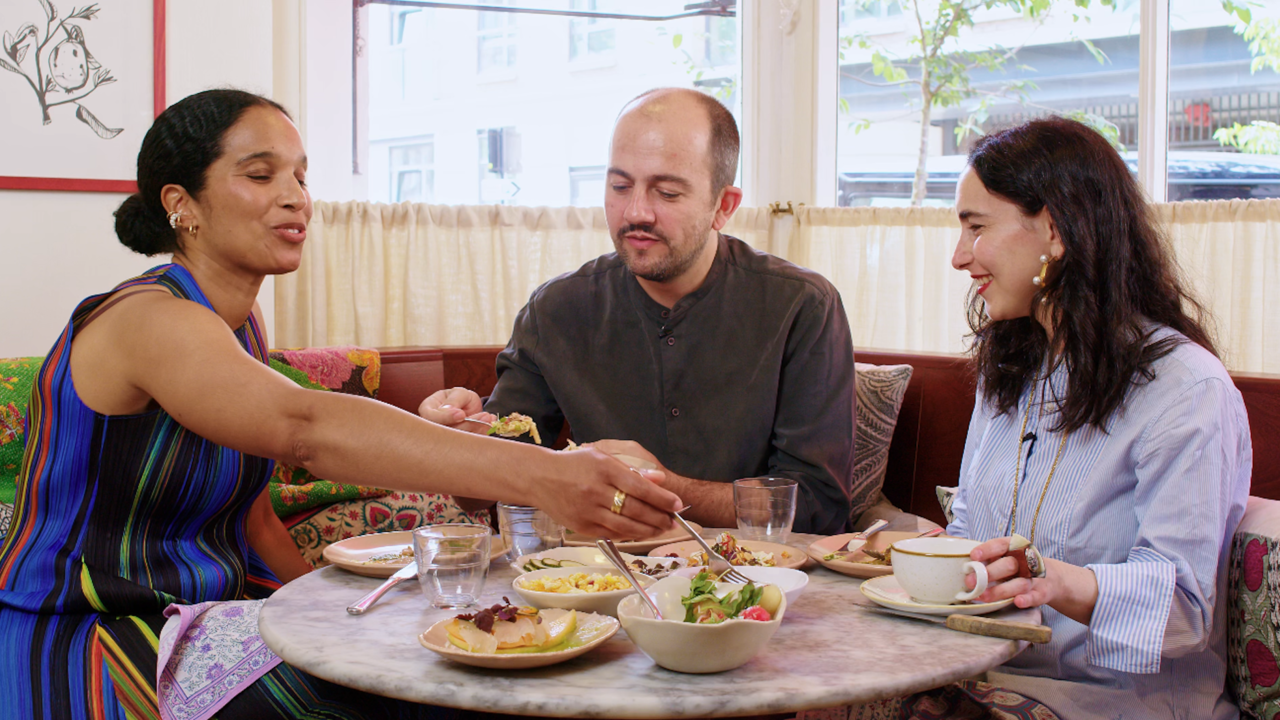David Hockney & Frances Stark
Nottingham Contemporary, UK
Nottingham Contemporary, UK

You’re opening a kunsthalle in the UK’s seventh-largest city, two hours from London. You have several publics to please: your institution needs to speak to the locals, but without being provincial. So you imprint the façade of your striking, green and gold, Caruso St John-designed building in the city’s Lace Market area with a filigree pattern sourced from lace found in a 19th-century time-capsule dug up on the site – but you also get Matthew Brannon in to decorate the café. And then, having remembered not to fill the place with Scandinavian abstraction, you launch with a crafty, diversely intersecting double-header. A youngish, art-world-approved (but not over-exposed) Californian who specializes in expressing assured anxiety and febrile joys through spacious, funky collage; and the UK’s most beloved living artist, seen here – in a show focusing tightly on 1960–8, when he lived variously in England and California – at his edgiest and, arguably, most fulsomely inventive.
Assembled by Nottingham Contemporary director Alex Farquharson and curator Jim Waters, the David Hockney show (‘A Marriage of Styles’) plays in reverse: beginning with the bright, familiar, sun-dazzled expat in California, it backtracks to trace the Yorkshireman’s scuffling route towards this easeful world of male bodies in Beverly Hills showers and blue, blue pools. In 1960, while a student at London’s Royal College of Art, Hockney made his first painting about homosexuality: the small, mustard-toned semi-abstraction Queer, its primary elements a black star and the barely legible titular epithet. It would be seven more years before gay relations were legal in the UK, and six before Hockney was lithely sketching men sharing beds for his series of etchings ‘Illustrations for Fourteen Poems from C.P. Cavafy’ (1966). In this installation, those years reflect a steady emboldening in both subject matter and form.
In the dual figure composition We Two Boys Together Clinging (1961), Hockney adapts the physiognomic deformations and sensuously feral paintwork of 1950s De Kooning into cartoonish tenderness, and stitches the composition together with the title phrase (in a child’s handwriting), a wry homoerotic repurposing of a Walt Whitman line. By 1962 Hockney had spent time in America, as documented in the comic cautionary tale of his Hogarth-updating etchings suite, ‘A Rake’s Progress’ (1961–3). The First Marriage (A Marriage of Styles I) (1962), with its reshaped image of a friend beside an Egyptian statue, roomy composition and attendant palm tree, anticipates the warm-climate ease and stylistic intransigence of his later Los Angeles paintings. It’s a little sad to say farewell to the giddy mélanges of Hockney’s early style, and his exuberant obsessions with the young Cliff Richard and beefcake models. As he evolves into the deceptively serene architect of A Bigger Splash (1967) and its beautiful, lesser-known cousin A Lawn Sprinkler (1967) – LA gardens in perpetual mid-afternoon, subtended by a constant need to cool hot bodies, and hot earth – it’s underlined that Hockney is, essentially, a tenacious problem-solver. How to paint the dynamics of water and to talk about homosexuality in art are problems of different magnitudes, of course. What matters is that Hockney, boldly and satisfyingly, solves them.

‘But what’ – to quote the full title of the exhibition that complements Hockney’s – ‘of Frances Stark, standing by itself, a naked name, bare as a ghost to whom one would like to lend a sheet?’ Looking at A Bigger Splash, one can imagine one of Joan Didion’s frazzled rich housewives standing motionless inside the bungalow with a fistful of tranquilizers; and Stark’s persona in her art sometimes suggests an equivalent to the self-image Didion presents in her journalism and fictional manquées: the sort of highly-strung, hyper-aware woman who used to get called ‘neurasthenic’. Underneath, though, both writer and artist are likely tough as old boots.
Here, in a Farquharson-helmed array that underlines correspondences between Stark and Hockney (beyond the latter featuring on a private view invitation in Stark’s To a Selected Theme (Fit to Print), 2007) – LA, self-exposure, theatricality, the invention or leveraging of an artistic persona, reverence for literature – we get a meld of recap and recent work. From the outset, Stark has twisted the Modernist permission to flaunt subjectivity, exposing thought’s fraying edges, its quicksilver succours. Momentarily Lifted (2001) features the repeated handwritten phrase ‘momentarily lifted out of a tangle of rational intentions’, and it’s these paradoxical transcendences that Stark seems to chase and celebrate, finding them most obviously in literature: And brrrptzzap* the subject (2005) features a peacock whose tail is made up of pages of repeated letters and, it appears, pages from Robert Musil’s The Man Without Qualities (1930–42). In the painting/collage A Woman and a Peacock (2008), a graphical Stark doppelgänger encounters another specimen on a ledge or precipice: the bodies of both artist and bird are made up of collaged scraps of exhibition flyers and art works. Peacocks are a double-edged Stark motif, speaking of self-display and the sin of pride; of what it means to parade one’s mental workings as art.
Even when it features no text, Stark’s art is partly one of offhandedly elegant and airy compositional instinct, but mostly one of deftly judged voice. It risks, however, becoming all intonation, all twitchy character. Seemingly she recognizes this: Stupidity (Pink) (2009), a painted silhouette of a hand appearing to hold a clutch of real fabrics and obscure papers on a pink background, and The Inchoate Incarnate (2009), a trio of black costumes in the shape of giant, old-fashioned dial telephones, open onto ambiguous emotional territory. One of the phone-dresses is pointedly subtitled ‘Summon Me and I’ll Probably Come’. The key word, sustaining Stark’s delicate balance of light-headedness and grit, is ‘probably’.
























